ECOLOGY ▪ EDUCATION ▪ ADVOCACY
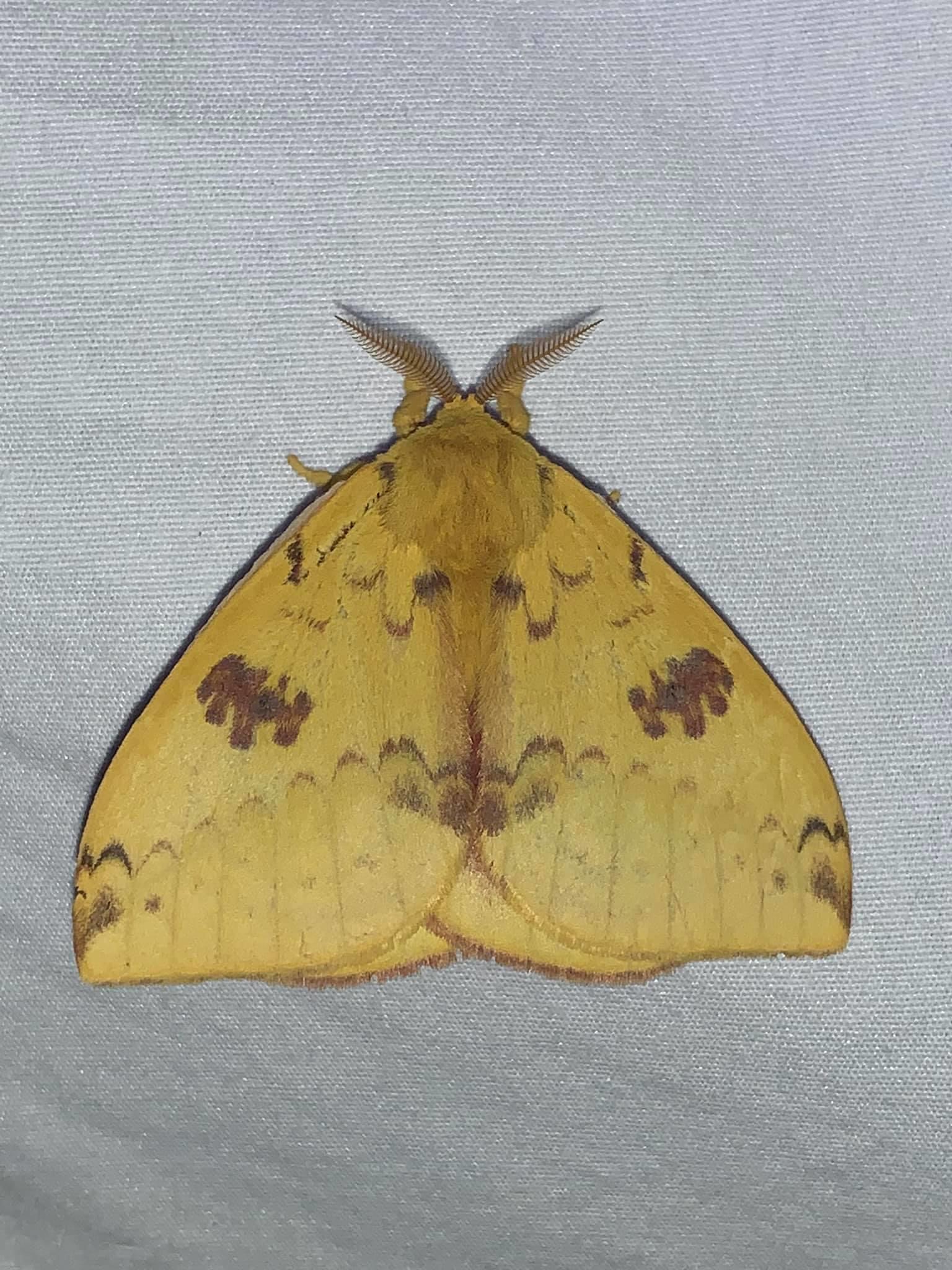
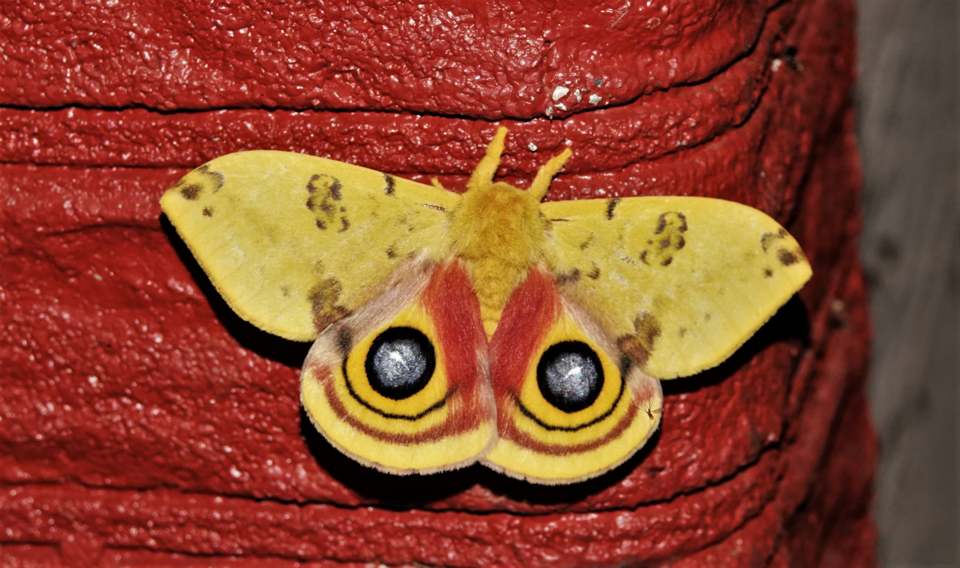
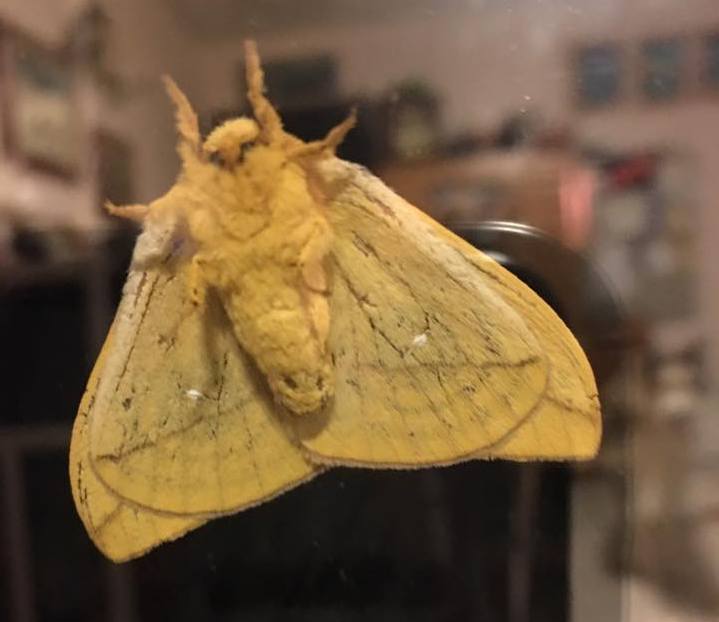
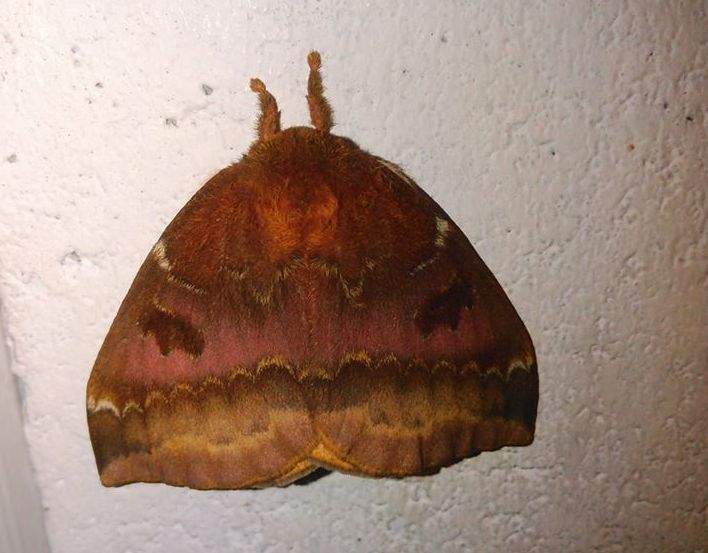
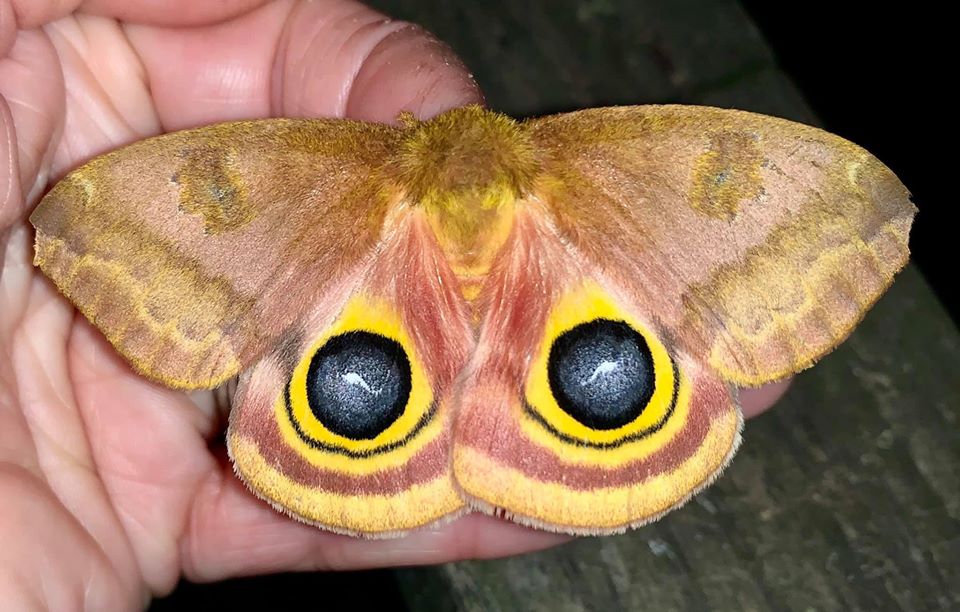
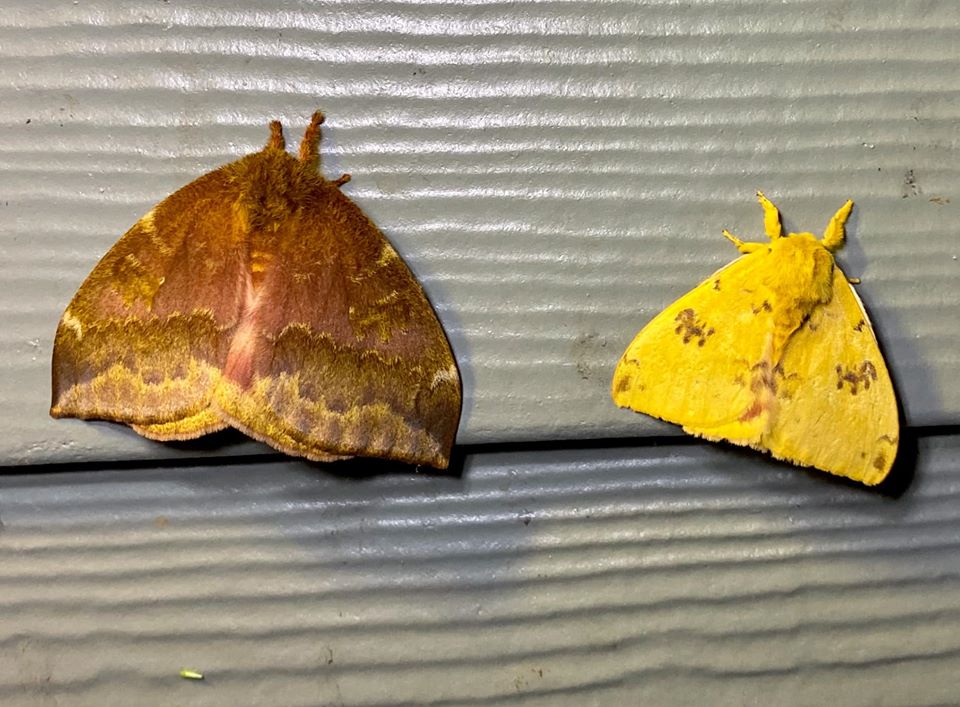
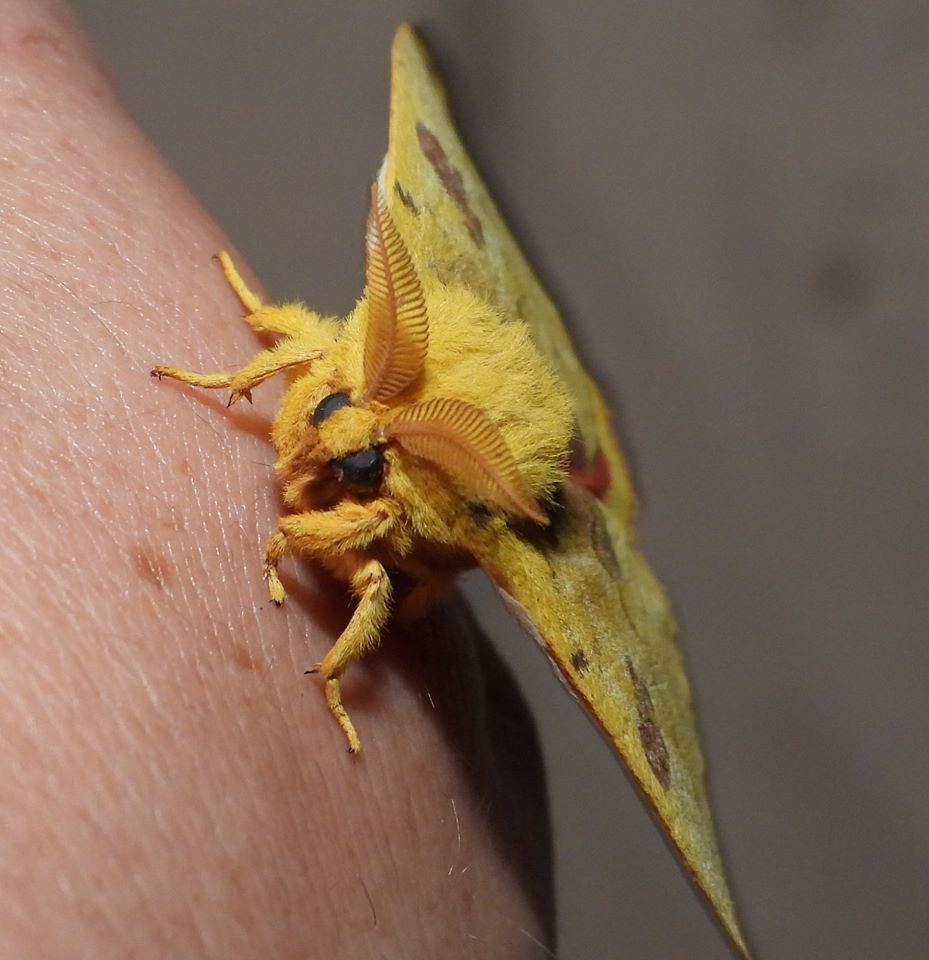
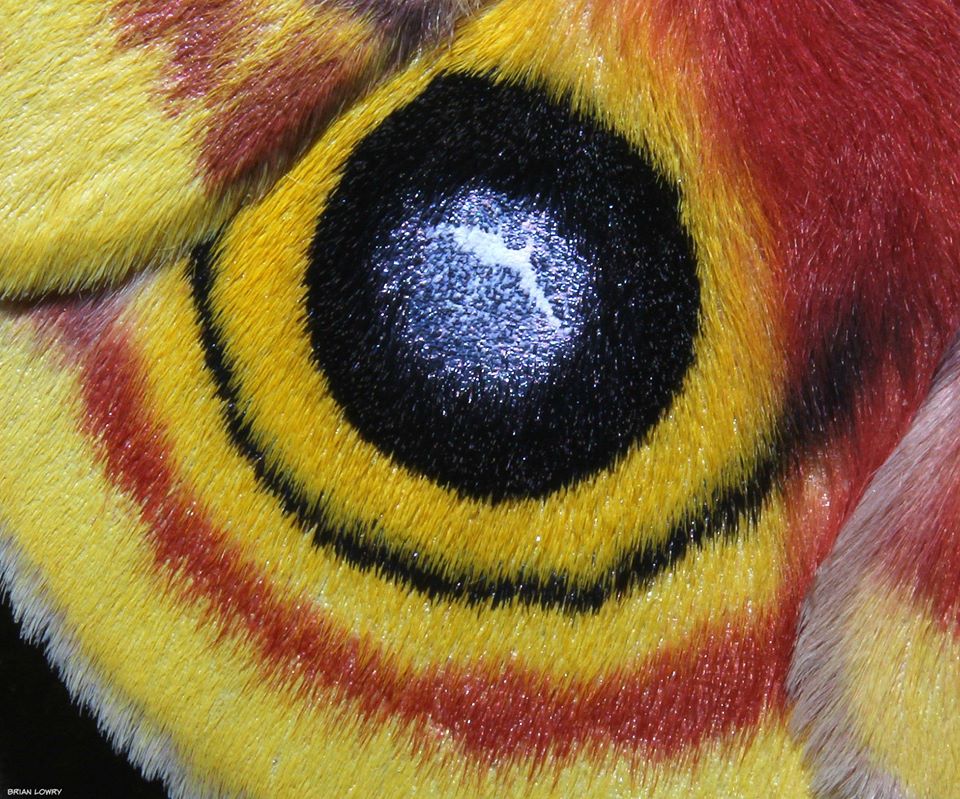
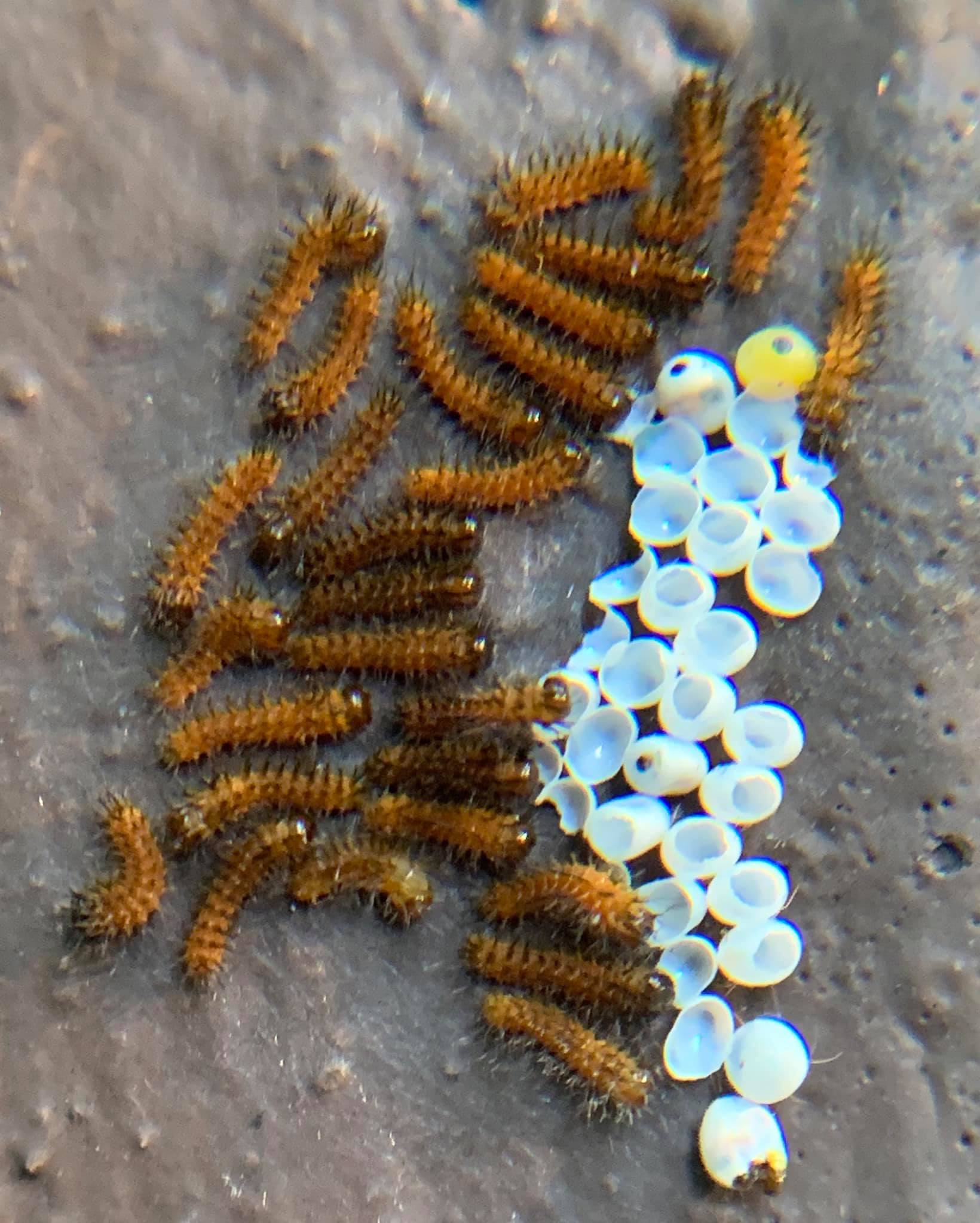
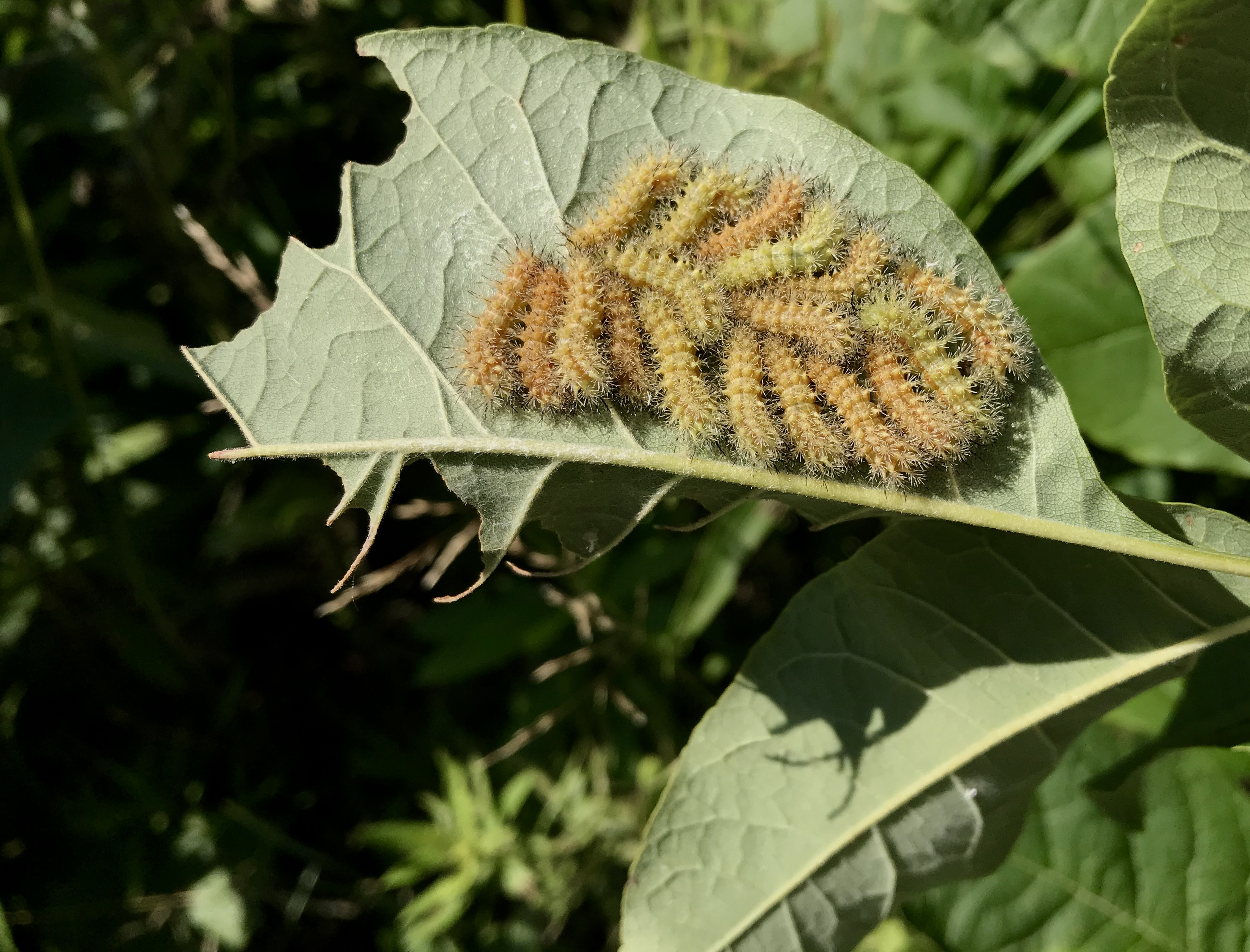
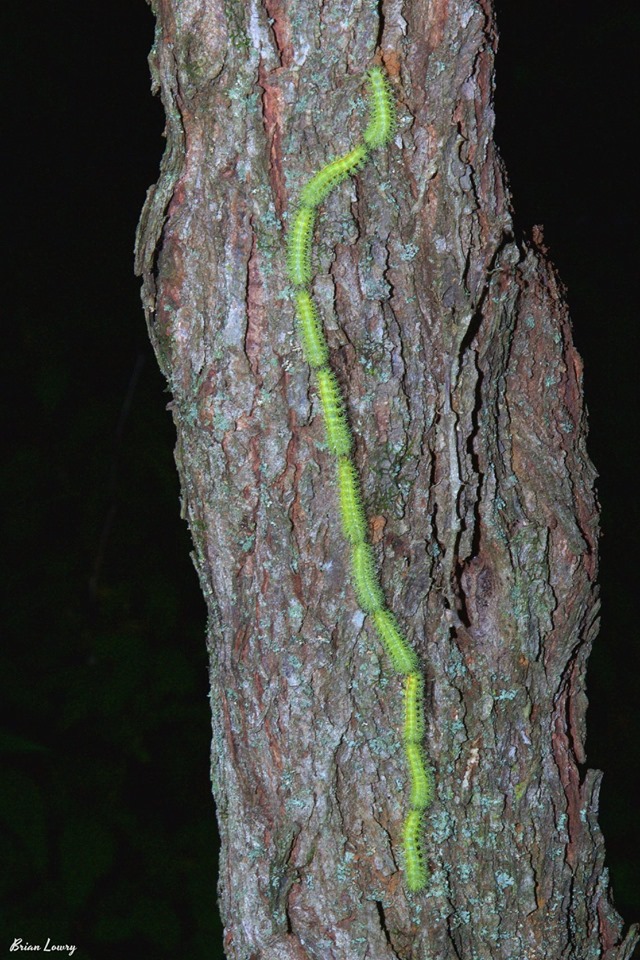
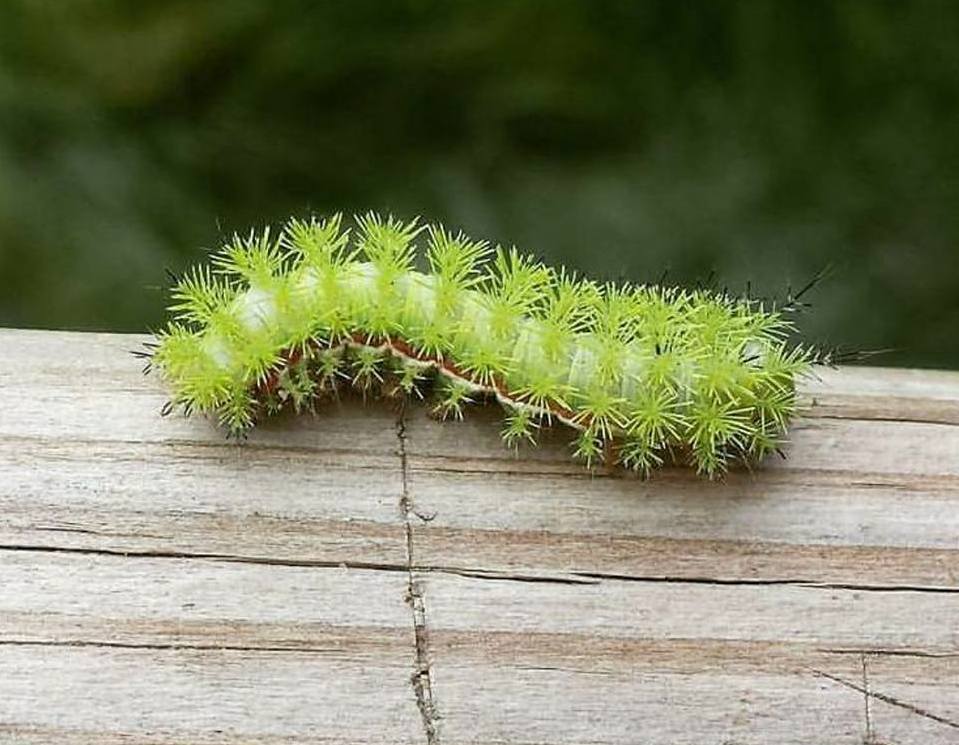
Automeris: Combines the Greek auto meaning “self” and meris meaning “divided.”
Io: Derived from Greek mythology, Io, princess of Argos, was a mortal woman with whom Zeus fell in love. Io is also the innermost and third largest of Jupiter’s moons.
ahw-toe-mihr-is eye-oh eye-oh
Hoosier author Gene Stratton Porter sometimes referred to io moths as “Hera of the Corn,” meaning “goddess or queen of the corn,” which was in reference to corn being an occasional host plant to the caterpillars (Stratton-Porter 1921).
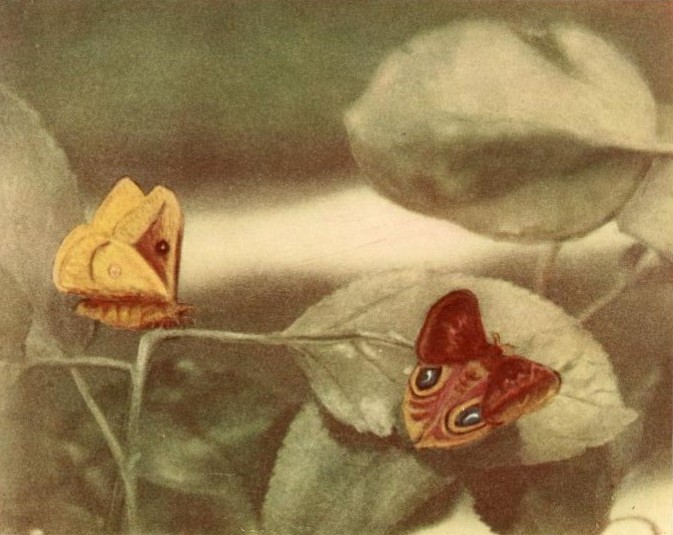













This map illustrates documented North American records of Automeris io io as of 17 May 2021.
 Documented record(s)
Documented record(s) 5: Secure
5: Secure  4: Apparently secure
4: Apparently secure  NR: Not ranked
NR: Not ranked
Automeris io io caterpillars are polyphagous and able to eat the foliage of several families and genera of native trees. Adults lack a digestive system, do not eat, and exist solely for reproduction.
| Known Larval Food Sources in Indiana | ||
| Family | Taxonomic Name | Common Name |
|---|---|---|
| Order: Aquifoliales | ||
| Aquifoliaceae | Ilex spp. | hollies |
| Order: Cornales | ||
| Cornaceae | Cornus spp. | dogwoods |
| Nyssaceae | Nyssa sylvatica | black gum, aka tupelo |
| Order: Dipsicales | ||
| Adoxaceae | Viburnum spp. | viburnums |
| Caprifoliaceae | Symphoricarpos spp. | snowberries |
| Order: Ericales | ||
| Ebenaceae | Diospyros virginiana | persimmon |
| Ericaceae | Rhododendron spp. | azaleas and rhododendrons |
| Order: Fabales | ||
| Fabaceae | Albizia julibrissin | Persian silk tree |
| Amorpha canescens | lead plant | |
| Baptisia spp. | wild indigos | |
| Chamaecrista spp. | partridge peas | |
| Galactia volubilis | downy milk pea | |
| Gleditsia spp. | water and honey locusts | |
| Glycyrrhiza lepidota | American licorice | |
| Lespedeza spp. | lespedezas | |
| Melilotus spp. | sweet clovers | |
| Phaseolus polystachios | thicket bean | |
| Robinia spp. | locusts | |
| Trifolium spp. | clovers | |
| Wisteria spp. | wisterias | |
| Order: Fagales | ||
| Betulaceae | Betula spp. | birches |
| Carpinus caroliniana | musclewood, aka blue beech | |
| Corylus americana | American hazelnut | |
| Ostrya virginiana | hop-hornbeam, aka ironwood | |
| Fagaceae | Fagus grandifolia | American beech |
| Quercus spp. | oaks | |
| Juglandaceae | Carya spp. | hickories |
| Juglans spp. | black walnut and butternut | |
| Myricaceae | Comptonia peregrina | sweet fern |
| Order: Hamamelidales | ||
| Platanaceae | Platanus occidentalis | American sycamore |
| Order: Lamiales | ||
| Oleaceae | Fraxinus spp. | ashes |
| Ligustrum spp. | privets | |
| Order: Laurales | ||
| Lauraceae | Sassafras albidum | sassafras |
| Order: Magnoliales | ||
| Magnoliaceae | Liriodendron tulipifera | tulip tree |
| Magnolia spp. | magnolias | |
| Order: Malvales | ||
| Malvaceae | Hibiscus spp. | hibiscus |
| Tiliaceae | Tilia americana | American basswood |
| Order: Myrtales | ||
| Lythraceae | Lythrum spp. | loosestrifes |
| Order: Pinales | ||
| Pinaceae | Abies spp. | firs |
| Order: Poales | ||
| Poaceae | Cynodon dactylon | Bermuda grass |
| Zea mays | corn | |
| Order: Rosales | ||
| Cannabaceae | Humulus spp. | hops |
| Moraceae | Ficus carica | common fig |
| Morus spp. | mulberries | |
| Rosaceae | Amelanchier spp. | serviceberries |
| Crataegus spp. | hawthorns | |
| Malus spp. | apples and crabapples | |
| Physocarpus opulifolius | ninebark | |
| Prunus spp. | cherries | |
| Pyrus spp. | pears | |
| Rosa spp. | roses | |
| Rubus spp. | blackberries, dewberries, and raspberries | |
| Spirea spp. | meadowsweets | |
| Ulmaceae | Celtis spp. | hackberries |
| Ulmus spp. | elms | |
| Order: Salicales | ||
| Salicaceae | Populus spp. | poplars |
| Salix spp. | willows | |
| Order: Sapindales | ||
| Aceraceae | Acer spp. | maples |
| Order: Saxifragales | ||
| Altingiaceae | Liquidambar styraciflua | American sweetgum |
| Grossulariaceae | Ribes spp. | currants and gooseberries |
The map, graph(s), and data below represent the Indiana sightings of Automeris io io as of 30 March 2025, confirmed through photographic evidence by individuals who contributed to the Great American IN Nature Lepidoptera Project (GAIN LP).
Counties recorded:
45 of 92
Top counties/#of records:
Brown: 70
Monroe: 32
Hamilton: 29
Scott: 17
Porter: 14
Washington: 13
Hendricks: 10
 GAIN LP documented in county
GAIN LP documented in county
The images and records below were all submitted by individuals through the Great American Indiana Nature Lepidoptera Project (GAIN LP).
Stratton-Porter, G., 1921. Moths of the Limberlost, with water color and photographic illustrations from life. Garden City, NY and London: Doubleday, Page & Company.